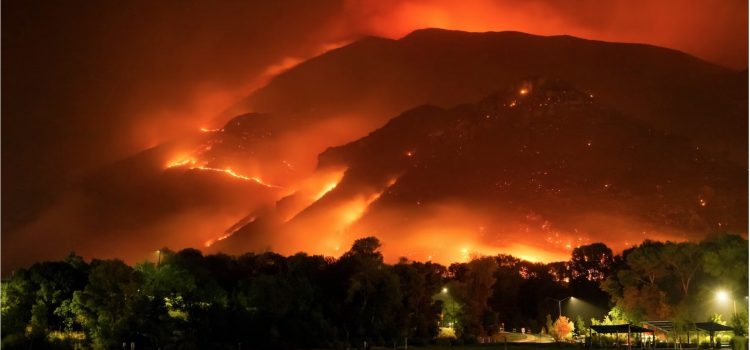
This is a free excerpt from one of Shortform’s Articles. We give you all the important information you need to know about current events and more.
Don't miss out on the whole story. Sign up for a free trial here .
Why are climate change mitigation strategies important? What do scientists suggest we do to reduce global warming?
Millions of people around the world will soon find their homes threatened by wildfires, floods, and drought as a result of climate change, according to scientific models. In the U.S. alone, we’re likely to see millions of people fleeing the South and Southwest to escape the deadly heat.
Read on to learn how NASA says we can address these threats through climate change mitigation strategies.
Why Climate Change Mitigation Is Necessary
Scientists say rising temperatures brought about by trapped greenhouse gases are already making parts of the world less hospitable to human life, leading many to call for climate change mitigation strategies. Already, the southwestern US is seeing drought conditions leading to reduced food production that are expected to worsen over time. Increased evaporation and a hotter atmosphere are leading to more extreme storms all over the world, such as 2012’s devastating Hurricane Sandy. In some places, the heat itself can be lethal: Recent heat waves in India and Europe led to thousands of deaths from heatstroke. Hotter temperatures are melting glaciers, causing rising sea levels, which threaten to flood coastal areas. Naturally, as parts of the world become less habitable, those who can are fleeing to safer places.
Many of the “climate migration hotspots”—areas identified by experts as likely to either lose or receive a large number of people—are areas already struggling with overpopulation, poverty, and stressed infrastructure systems: The three regions of Sub-Saharan Africa, South Asia, and Latin America alone are expected to see more than 140 million people moving within their borders. This will likely exacerbate existing problems in education, employment, and health care, as well as crime and long-simmering political tensions between disparate groups of people. In the US, droughts, wildfires, and flooding will likely drive people away from hot or coastal areas. Some regional officials—for example, in Florida—have already acknowledged they won’t be able to defend certain roads from rising sea levels.
NASA’s Mitigation Strategies
NASA scientists urge a two-pronged approach to tackling global warming. NASA’s mitigation strategy involves making climate change less severe by reducing how much greenhouse gas we produce—and environmental experts are celebrating a win on that front. The Inflation Reduction Act (IRA), which includes billions of dollars in clean energy investments, was recently signed into US law.
Most importantly for you, as a climate change mitigation strategy, the IRA includes tax credits for consumers who buy electric vehicles or take steps to make their homes more environmentally friendly. So, if you’re interested in being part of the mitigation efforts, see which of those credits you might be able to take advantage of, and encourage others to do the same.
Senate Democrats predict that the IRA will lead to a 40% reduction in US greenhouse gas emissions by 2030. However, perhaps even more significantly, some experts believe that the IRA could represent a turning point for green energy in the US: The tax credits are projected to spur major growth in green energy industries, which in turn will lead to the creation of high-paying jobs and the associated economic benefits. That growth will prompt further investments in green energy, further reducing emissions, and so on.
The most optimistic models predict that—if the world is able to mitigate climate change with initiatives like the IRA—we may see no more than two feet of sea level rise, which will save a great number of homes along coastlines. Those same models predict that, while the weather will be hotter and storms will be more intense, we’ll stave off the worst effects of climate change, meaning that far fewer people will be forced out of their homes.
If you want to get involved in climate change mitigation, supporting political actions like the IRA is a possible way to strategize for the future, and to protect your home and family.
Strategies for Climate Refugees
Aside from getting involved in climate change mitigation strategies, if you’re in an area that may be severely harmed by climate change, you should make an evacuation plan. Figure out where you and your loved ones will go: perhaps someplace where you have family or friends to support you, or else a city that’s likely to avoid the worst effects of climate change. If it’s practical, look into leaving before it becomes an emergency. It’s also important to know what you’ll take with you if you have to evacuate. You’ll need food, medical supplies, toiletries, and important documents like your passport or birth certificate. Have a “bug-out bag” ready to go in case you need to leave quickly, such as if a wildfire is approaching.

Want to fast-track your learning? With Shortform, you’ll gain insights you won't find anywhere else .
Here's what you’ll get when you sign up for Shortform :
- Complicated ideas explained in simple and concise ways
- Smart analysis that connects what you’re reading to other key concepts
- Writing with zero fluff because we know how important your time is






